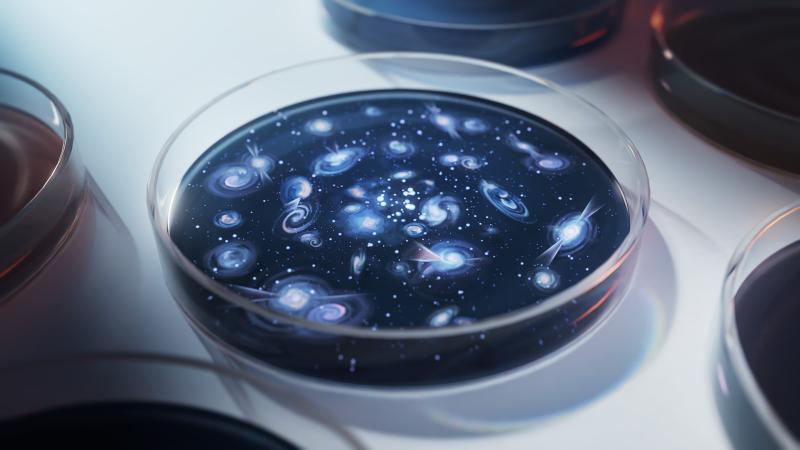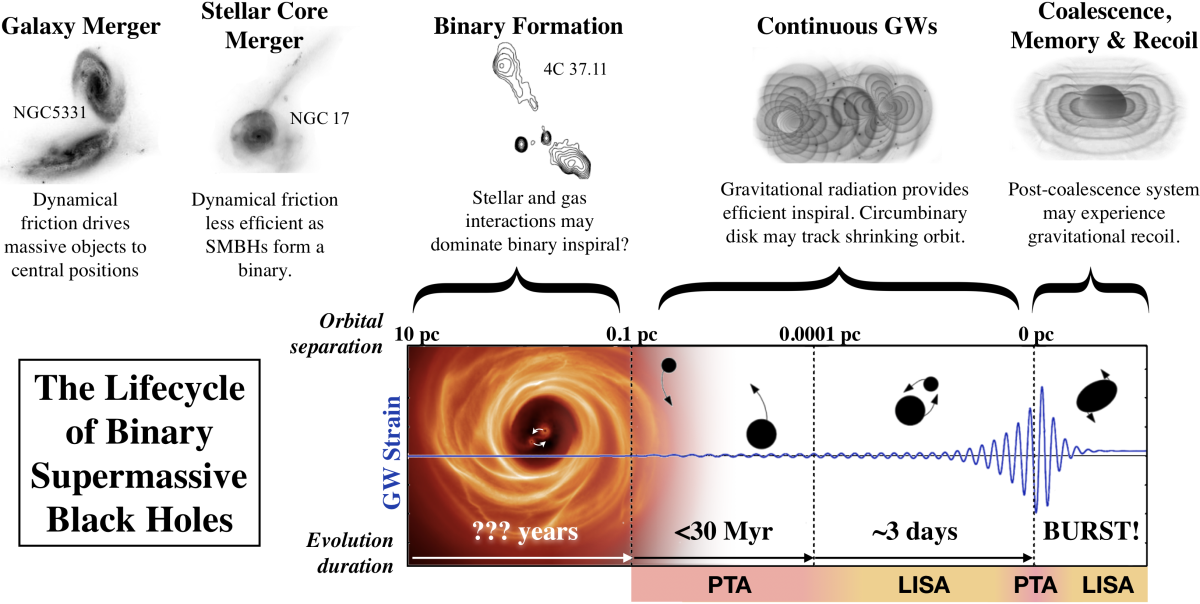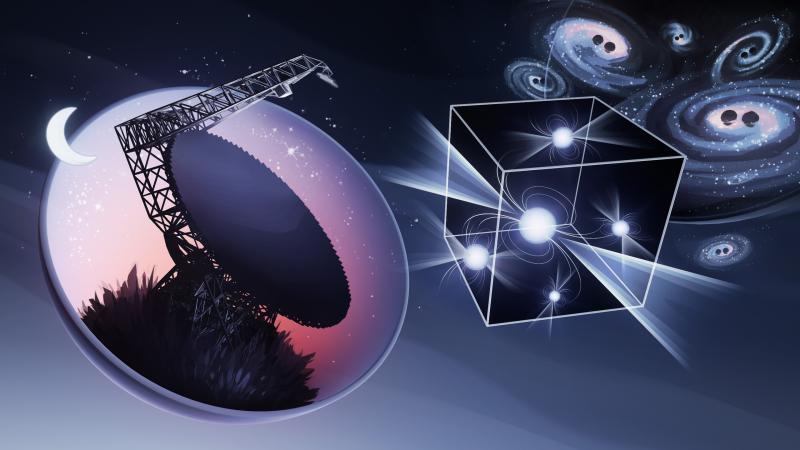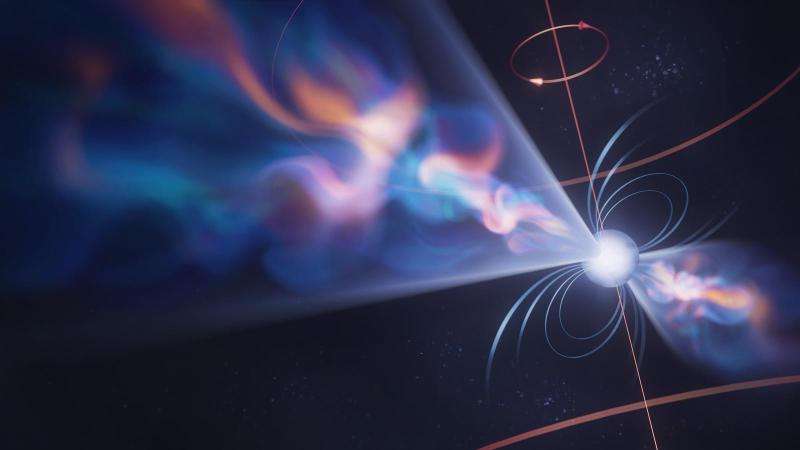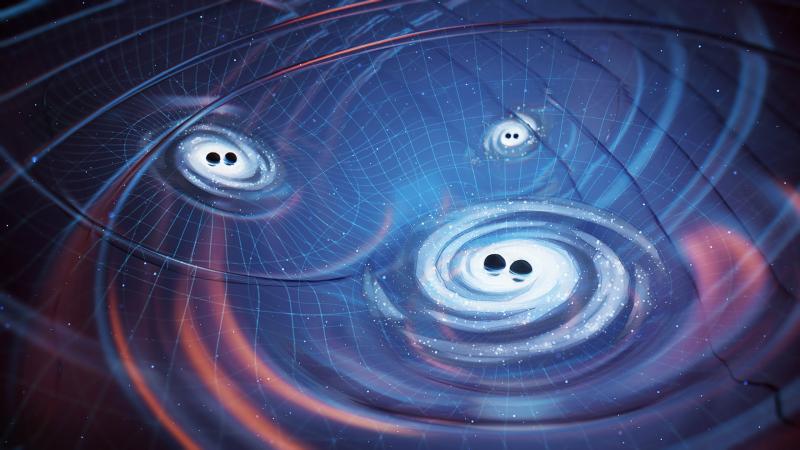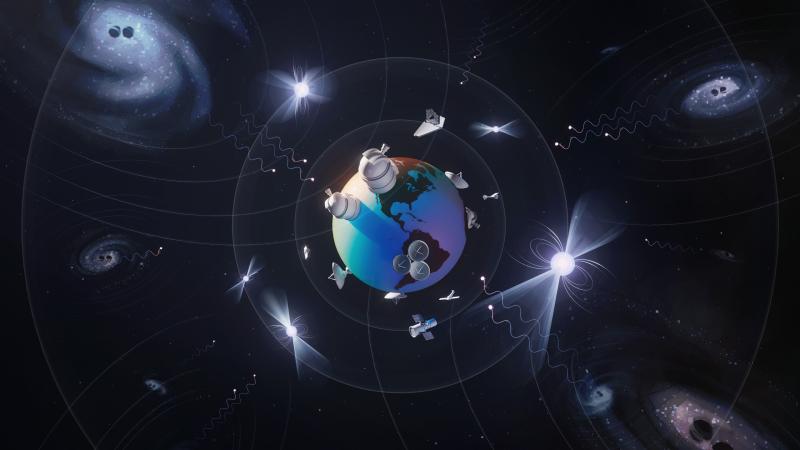There is a lot we don’t understand about the final stages of this process, though. In particular, we know that gravitational wave emission will cause the black holes to merge at the very final stages, but what other processes bring the black holes together before that time? This is known as the “final parsec problem”. By measuring the gravitational waves produced in the final millions of years of the binary’s life, we can understand how these behemoth mergers occur, and the nature of their interactions with the host galaxy. Indirectly, gravitational waves also provide unique insights into the subtle connections between black holes and galaxies, thus providing clues to how galaxies and supermassive black holes form and co-evolve over cosmic time.
